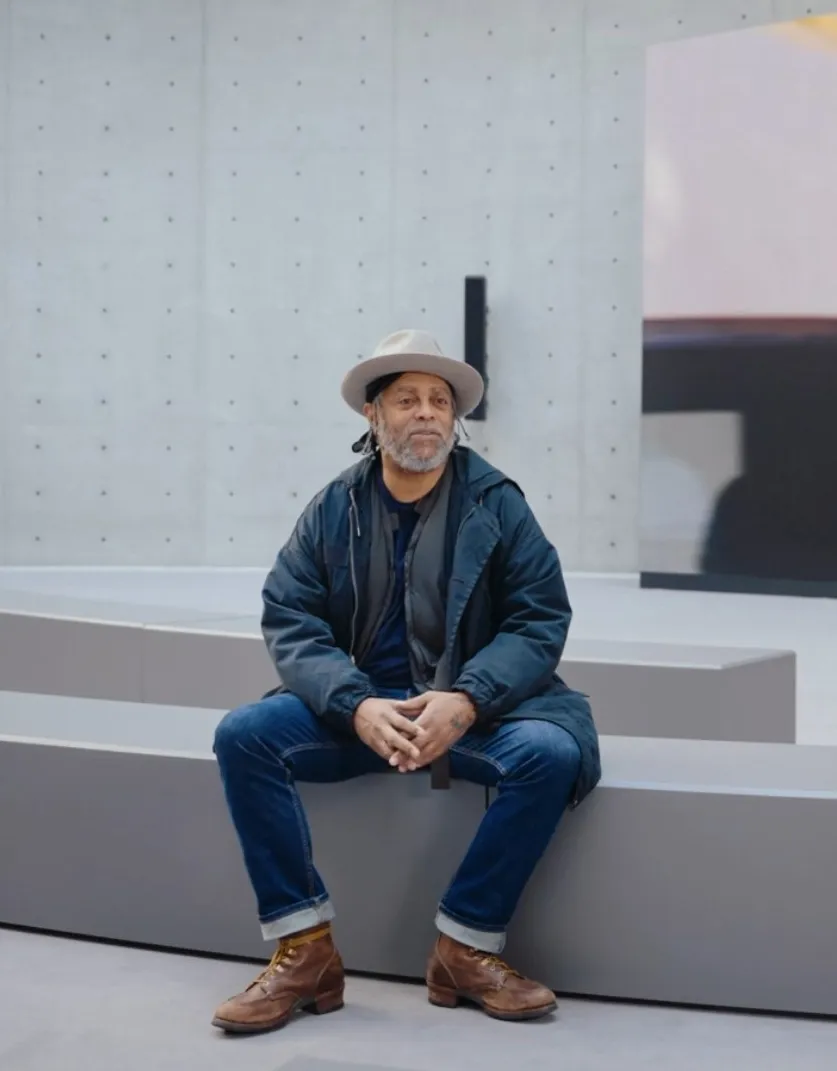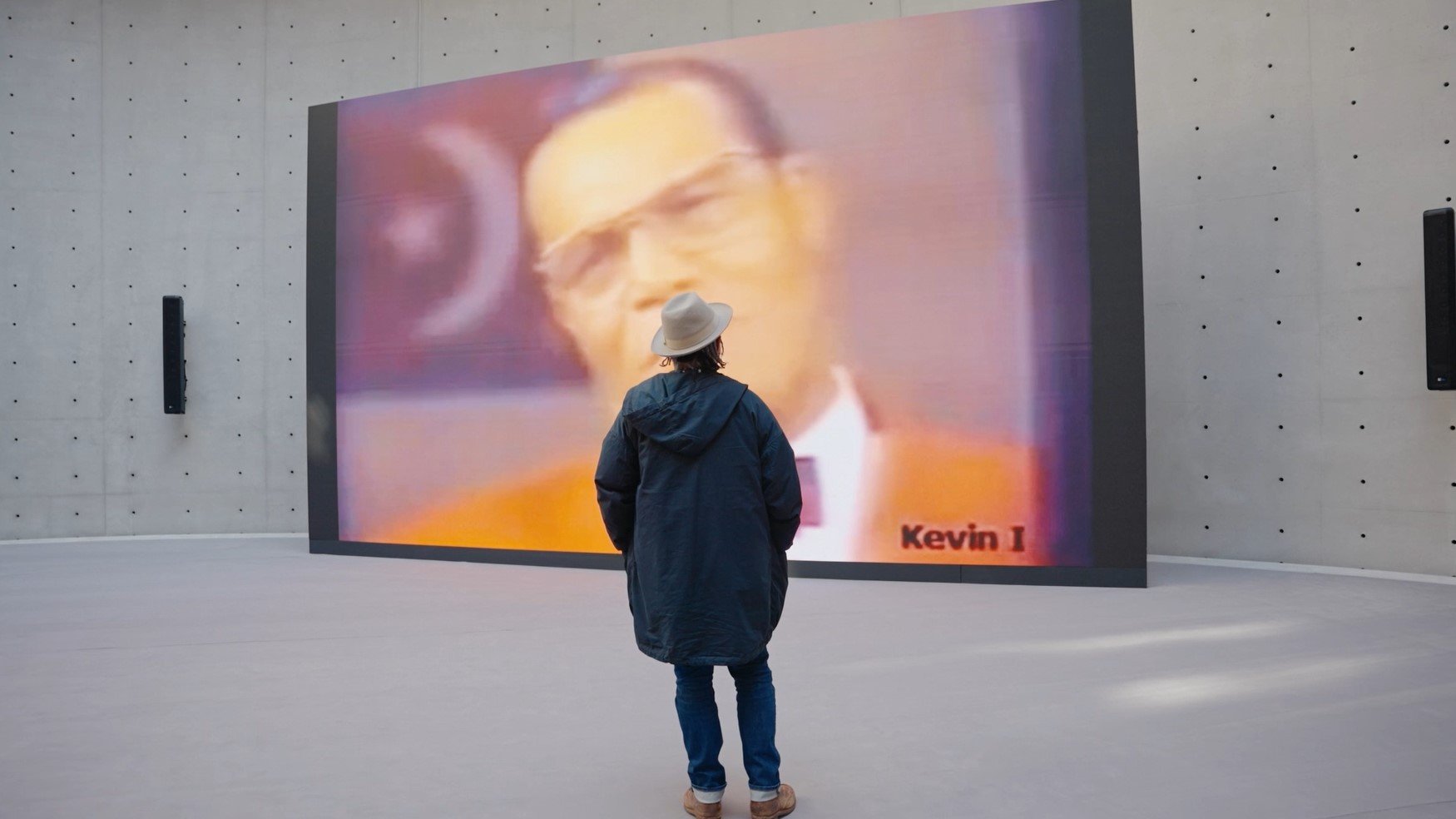
"I try to create complex works that don’t lend themselves to simple, binary responses." — Arthur Jafa
The work of Arthur Jafa, key figure on the contemporary scene, is devoted to the notion of blackness, the assertion of a complete African-American cultural Identity.
It’s the first time that Love Is the message, The Message Is Death is to be presented in Paris. What does that mean for you?
I’ve always thought that Love Is the Message, The Message Is Death absolutely belonged in Paris. It’s a diverse society, with a complex racial and ethnic relationships like you see the United States. In fact, it's one of the few places in Europe where I think is very similar to the U.S. Moreover, showing the work in the Rotunda is a bit like performing during the Super Bowl halftime show. It’s a once-in-a-lifetime opportunity!
What feelings or thoughts would you like to provoke through your work?
I try to create complex works that don’t lend themselves to simple, binary responses like “yes” or “no.” Love Is the Message, The Message Is Death refers first to the iconic song Love Is the Message, but also to a science fiction short story that deeply moved me when I was young, written by James Tiptree Jr.: Love Is the Plan, the Plan Is Death. The title is a combination of these two references. I was especially committed to capturing the complex relationship that Black Americans have with their American identity. I could have even titled the work Love Is the Message, the Message Is Hate — that’s how ambivalent this relationship is. It’s neither pure love nor pure hate.
Many people, especially among Black Americans, leave the work feeling deeply moved, sometimes even soothed. For others, it’s the exact opposite. And that, to me, best illustrates the African-American experience: a complex ball of things that are both magnificent and miserable that can't be disentangled. You can’t choose just one aspect — it’s an indivisible whole.

Would you say your work is political?
It’s political, as all art is. But I don't really feel like it's a protest work at all. At best, it tries to render something of the complexity of what it means to be a Black American in our relationship to not just America, but the West Europe. What truly obsesses me, given my specific connection to Western artistic practices, are the ideas — the perspectives that this relationship makes possible. My relationship to performance, improvisation, expressivity — all those dimensions take on a different tone when Black people, Afro-descendants, enters into these questions of modernism. The viewpoint is slightly different: we're both inside of it and outside of it at the same time.
"I don't really feel like it's a protest work at all. At best, it tries to render something of the complexity of what it means to be a Black American in our relationship to not just America, but the West Europe."
Music plays an essential role in your work. What does it convey?
Black music has been one of the predominant art forms of the 20th century, alongside cinema perhaps. It’s a deeply rooted product of Western culture. When you study traditional African music, you discover remarkable diversity — it’s impossible to reduce it to a single genre. What’s fascinating is how Black music — and this is something everyone is aware of — grew out of or evolved from traditional African music. So the question of trying to deeply understand black music is just another form of trying to deeply understand blackness. It’s not the only way, of course, but it’s perhaps one of the most powerful tools the Black community has found to express its existential experiences in the West. That’s why I believe a true understanding of Black music can also lead to a deeper reading of contemporary artistic practices and Black identity — both the political and existential sense of black being. Ultimately, it brings us back to the ancient adage: “Know thyself.” That’s what I try to do through my work. People often tell me that my works are about Black people. But I don’t try to make work about Black people. I make work like Black people.

What are your musical influences, and how do they contribute to your work?
Sometimes I have a slightly ambivalent relationship about music in my work. It’s so powerful… You can lay it over almost anything, and suddenly it becomes interesting. Sometimes I even feel like when you pair music with an image, you tap into a kind of authenticity — even though I don’t really like that word. But it’s a fact: music brings strength, it underscores depth, it intensifies what we see. That’s especially true in akingdoncomethas, which is also screened in the exhibition. I conceived that video as a response to the idea that some artworks are “strong.” I wanted to say, “Let me show you what a truly strong work of art can be.”
Your films are being shown as part of the Corps et âmes exhibition. What does this theme inspire in you?
It’s an ongoing question for Black people, everywhere in the world and in contemporary societies. I sometimes try to explain it this way: after slavery, Africans who ended up in the West have always had a complicated relationship with the idea of a separation between body and soul. Traditionally, we were never fully allowed to be subjects, nor entirely reduced to objects. We float in between. We’ve been assigned this ambiguous space: of the in between us of being a subject meaning with volition and self-determinacy and an object which supposedly has no volition, no self-determinacy.
It’s this tension that shapes a very particular way of seeing and inhabiting the world. Body and soul. That’s it. You can't get much more specific around what specific forces led to the very unique approach and understanding in the way Black people occupy the world.
